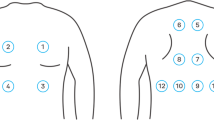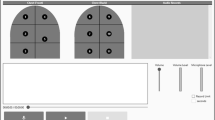Abstract
Determination of lung condition by auscultation is a difficult task and requires special training of medical staff. It is, however, a difficult skill to acquire. In decision making, it is significant to analyze respiratory sounds by an algorithm to give support to medical doctors. In this study, first, a rectangular window is formed so that one cycle of respiratory sound (RS) is contained in this window. Then, the windowed time samples are normalized. In order to extract the features, the normalized RS signal is partitioned into 64 samples of long segments. The power spectrum of each segment is computed, and synchronized summation of power spectra components is performed. Feature vectors are formed by the averaged power spectrum components, yielding 32-dimensional vectors. In the study, classification performances of multi-layer perceptron (MLP), grow and learn (GAL) network and a novel incremental supervised neural network (ISNN) are comparatively examined for the classification of nine different RS classes: Bronchial sounds, bronchovesicular sounds, vesicular sounds, crackles sounds, wheezes sounds, stridor sounds, grunting sounds, squawk sounds, and sounds of friction rub.






Similar content being viewed by others
References
McKusick VA, Jenkins JT, Webb GH (1955) The acoustic basis of the chest examination: studies by means of sound spectrography. Am Rev Tuberc 72:12–34
Kaisla T, Sovijarvi A, Piirila P, Rajala HM, Haltsonen S, Rosqvist T (1991) Validated methods for automatic detection of lung sound crackles. Med Biol Eng Comput 29:517–521
Munakata M, Ukita H, Doi I, Ohtsuka Y, Masaki Y, Homma Y, Kawakami Y (1991) Spectral and wave-form characteristics of fine and coarse crackles. Thorax 46:651–657
Piirila P, Sovijarvi A, Kaisla T, Rajala HM, Katila T (1991) Crackles in patients with fibrosing alveolitis, bronchiectasis, COPD, and heart failure. Chest 99(5):1076–1083
Piirila P (1992) Changes in crackle characteristics during the clinical course of pneumonia. Chest 102(1):176–183
Schreur HJ, Sterk PJ, Vanderschoot J, van Klink HC, van Vollenhoven E (1992) Lung sound intensity in patients with emphysema and in normal subjects at standardized airflows. Thorax 47:674–679
Sankur B, Kahya YP, Guler EC, Engin T (1994) Comparison of AR-based algorithms for respiratory sounds classification. Comput Biol Med 24(1):67–76
Doyle M (1994) Analysis of lung sounds using neural networks. MSc Thesis, Vanderbilt University
Malmberg LP, Pesu L, Sovijarvi AR (1995) Significant differences in flow standardized breath sound spectra in patients with chronic obstructive pulmonary disease, stable asthma, and healthy lungs. Thorax 50(12):1285–1291
Waitman RL, Clarkson KP, Barwise JA, King PH (2000) Representation and classification of breath sounds recorded in an intensive care setting using neural networks. J Clin Monit Comput 16:95–105
Dokur Z, Ölmez T (2003) Classification of respiratory sounds by using an artificial neural network. Intern J Pattern Recognit Artif Intell 17(4):567–580
Hadjileontiadis LJ, Panas SM (1997) Separation of discontinuous adventitious sounds from vesicular sounds using a wavelet-based filter. IEEE Trans Biomed Eng 44(12):1269–1281
Pesu L, Helistö P, Ademovic E, Pesquet JC, Saarinen A, Sovijärvi AR (1998) Classification of respiratory sounds based on wavelet packet decomposition and learning vector quantization. Technol Health Care 6(1):65–74
Rietveld S, Oud M, Dooijes EH (1999) Classification of asthmatic breath sounds: preliminary results of the classifying capacity of human examiners versus artificial neural networks. Comput Biomed Res 32:440–448
Guler I, Polat H, Ergun U (2005) Combining neural network and genetic algorithm for prediction of lung sounds. J Med Syst 29(3):217–231
Guler EC, Sankur B, Kahya YP, Raudys S (2005) Two-stage classification of respiratory sound patterns. Comput Biol Med 35:67–83
Kandaswamy A, Kumar CS, Ramanathan RP, Jayaraman S, Malmurugan N (2004) Neural classification of lung sounds using wavelet coefficients. Comput Biol Med 34:523–537
Zhang P, Bui TD, Suen CY (2004) Feature dimensionality reduction for the verification of handwritten numerals. Pattern Anal Appl 7(3):296–307
Torkkola K (2004) Discriminative features for text document classification. Pattern Anal Appl 6(4):301–308
Tao D, Li X, Wu X, Hu W, Maybank SJ (2007) Supervised tensor learning. Knowl Inf Syst 13:1–42
Tao D, Li X, Wu X, Maybank SJ (2007) General tensor discriminant analysis and Gabor features for gait recognition. IEEE Trans Pattern Anal Mach Intell 29(10):1700–1715
Harol A, Lai C, Peçkalska E, Duin RPW (2007) Pairwise feature evaluation for constructing representations. Pattern Anal Appl 10(1):55–68
Abe N, Kudo M, Toyama J, Shimbo M (2006) Classifier-independent feature selection on the basis of divergence criterion. Pattern Anal Appl 9(2–3):127–137
Shen L, Bai L (2006) A review on Gabor wavelets for face recognition. Pattern Anal Appl 9(2–3):273–292
Alpaydin E (1990) Neural models of incremental supervised and unsupervised learning. PhD Thesis, Ecole Polytechnique Federale De Lausanne, Switzerland
The R.A.L.E. Repository, Lung sounds, http://www.rale.ca
Mussell MJ (1992) The need for standards recording and analysing respiratory sounds. Med Biol Eng Comput 30:129–139
Author information
Authors and Affiliations
Corresponding author
Rights and permissions
About this article
Cite this article
Dokur, Z. Respiratory sound classification by using an incremental supervised neural network. Pattern Anal Applic 12, 309–319 (2009). https://doi.org/10.1007/s10044-008-0125-y
Received:
Accepted:
Published:
Issue Date:
DOI: https://doi.org/10.1007/s10044-008-0125-y




